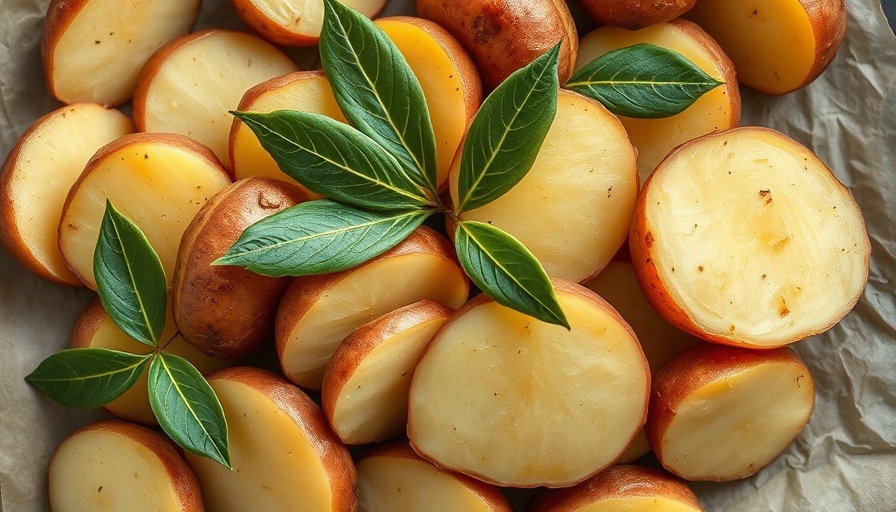
Embrace Fresh Bay Leaves: Your Cooking Will Thank You
In the culinary world, fresh bay leaves are often an underappreciated gem. Growing your own bay tree is not only feasible; it can significantly enhance the flavors of your dishes year-round. Imagine having aromatic, vibrant leaves at your fingertips, elevating everyday meals from ordinary to extraordinary. As the winter months approach and many herbs go dormant, fresh bay leaves become a reliable ally in your kitchen arsenal.
Why Fresh Bay Leaves Are a Game Changer
Marie Viljoen, a seasoned herb enthusiast, notes how fresh bay leaves contrast sharply with their dried counterparts. While dried leaves often carry a bitter taste, fresh bay leaves introduce a robust flavor explosion. They can be used generously in various dishes, making them far more versatile than one might assume. This herb, native to the Mediterranean, enriches everything from meats to vegetables. In fact, they’re so impactful that using fresh bay leaves can transform the simplest of meals into a feast.
Three Must-Try Bay Leaf Dishes
1. Slow Duck Braise: A hearty duck braise on a bed of fresh bay leaves creates aromatics that are simply irresistible. The depth of flavor in this dish showcases the true potential of fresh bay leaves.
2. Roasted Strawberries: Believe it or not, bay leaves work wonders even in desserts. Roasting strawberries with bay leaves may seem unconventional, but the herb lends a unique twist that elevates this simplistic dish.
3. Braise with Vegetables: Incorporating an abundance of fresh bay leaves into a vegetable braise can make even the dullest of produce sing with flavor, creating a comforting, satisfying dish.
How to Grow Your Own Bay Tree
If you’re inspired by the thought of having your own bay leaf supply, growing a bay tree is manageable even for beginners. Bay laurel (Laurus nobilis) thrives in USDA zones 8b to 10, making it suitable for many regions. Indoor gardening enthusiasts can also cultivate it as a houseplant. With proper care—adequate light, moderate watering, and good drainage—you'll soon harvest your flavorful leaves right from your kitchen.
Innovative Techniques: Getting the Most Out of Bay Leaves
Many cooks make the mistake of treating bay leaves like a sparing investment, tossing in just one or two without considering their full potential. When using fresh bay leaves, consider incorporating more than one—3 to 4 leaves can amplify the flavor without overshadowing the dish. Remember to remove them before serving to avoid bitter notes, a crucial step to achieve culinary perfection. To maximize the flavor, try soaking your fresh bay leaves in water before using them in cooking.
Store, Freeze, and Preserve: Extending Fresh Bay Leaf Life
After investing time into your bay tree, it pays to know how to preserve its bounty. Bay leaves can be frozen; simply place washed and dried leaves in a ziplock bag, making sure to remove excess air. Another creative way to keep them fresh is to display them as a decorative bouquet in your kitchen. Either method keeps these culinary stars ready for your next flavorful adventure.
Common Misconceptions: Fresh vs. Dried Bay Leaves
Many home cooks believe that there’s no notable difference between fresh and dried bay leaves. This is a misconception worth addressing. While dried bay leaves may be more convenient, they lack the fresh aroma and flavor that can elevate your dishes. If you have the option, always opt for fresh. The transition from dried to fresh can completely change your cooking game.
Actionable Cooking Techniques with Bay Leaves
Getting the most out of bay leaves goes beyond sprinkling them in dishes. Experiment with these actionable techniques: break or tear the leaves slightly before adding them to enhance their flavor release; incorporate them in marinades to deepen flavor profiles; and consider them in infusions to extract their delicate aromas without the presence of the leaves.
As you explore the culinary world, consider integrating fresh bay leaves into your cooking. They offer a multitude of flavor possibilities and can transform your meals. Bon appétit!
For more vibrant, kitchen garden tips and recipes, visit ProHomeGuides—your trusted hub for home project inspiration!
 Add Row
Add Row  Add
Add 




Write A Comment